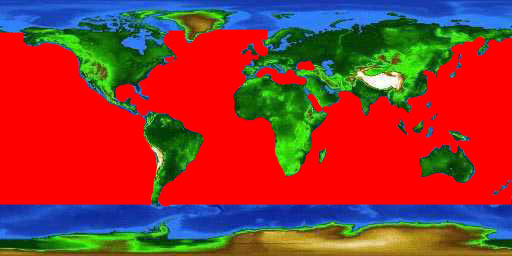
World distribution map for the swordfish
Common Names |
English language common names include swordfish, broadbill, broadbill swordfish, and sword fish. Other common names include agulha (Portuguese), albacora (Spanish), babljan (Serbian), dugso (Bikol), emperador (Spanish), espada (Portuguese), espadarte (Portuguese), espadon (French), haku (Niuean), jaglun (Serbian), kadu koppara (Sinhalese), lokjan (Marshallese), malasugi (Visayan), meda (Russian), mekajiki (Japanese), paea (Maori), pesce spada (Italian), pez espada (Spanish), sankeh (Arabic), swaardvis (Afrikaans), xiphias (Greek), and zwaardvisch (Dutch).
|
Geographical Distribution |
The swordfish is found in oceanic regions worldwide, including the Atlantic, Pacific, and Indian Oceans. It is found in tropical, temperate, and sometimes cold waters, with a latitudinal range of approximately 60°N to 45°S. The swordfish is a highly migratory species, generally moving to warmer waters in the winter and cooler waters in the summer. It is often present in frontal zones, areas where ocean currents collide and productivity is high.
|
|
Generally an oceanic species, the swordfish is primarily a midwater fish at depths of 650-1970 feet (200-600 m) and water temperatures of 64 to 71°F (18-22°C). Although mainly a warm-water species, the swordfish has the widest temperature tolerance of any billfish, and can be found in waters from 41-80°F (5-27°C). The swordfish is commonly observed in surface waters, although it is believed to swim to depths of 2,100 feet (650 m) or greater, where the water temperature may be just above freezing. One adaptation which allows for swimming in such cold water is the presence of a "brain heater," a large bundle of tissue associated with one of the eye muscles, which insulates and warms the brain. Blood is supplied to the tissue through a specialized vascular heat exchanger, similar to the counter current exchange found in some tunas. This helps prevent rapid cooling and damage to the brain as a result of extreme vertical movements.
|
|